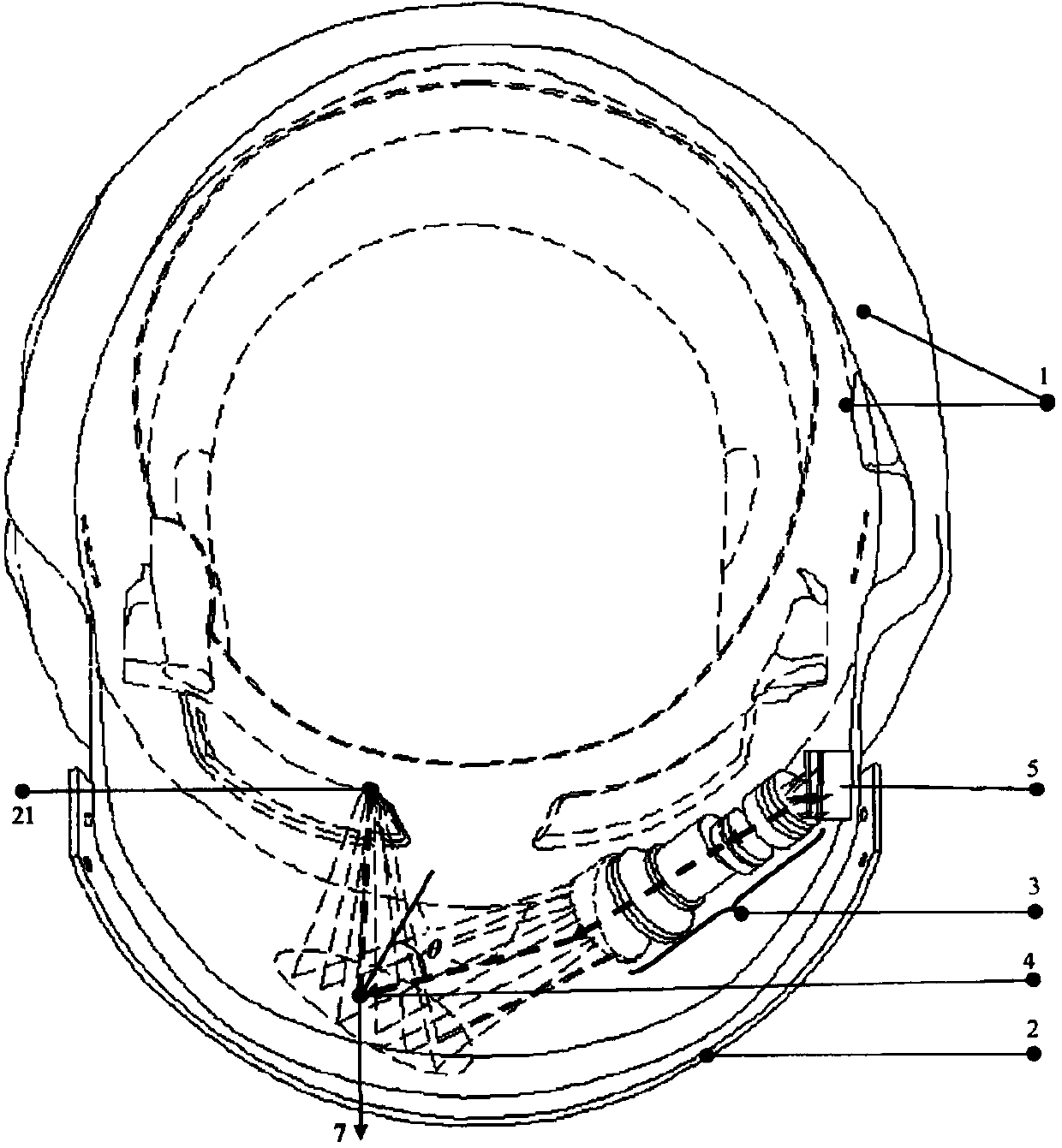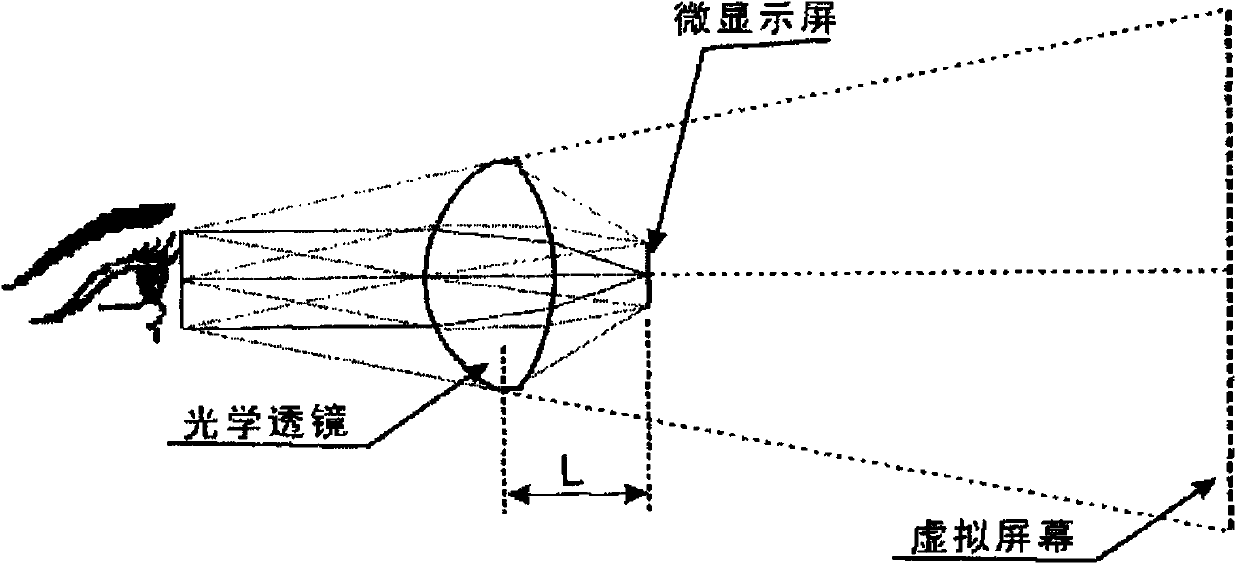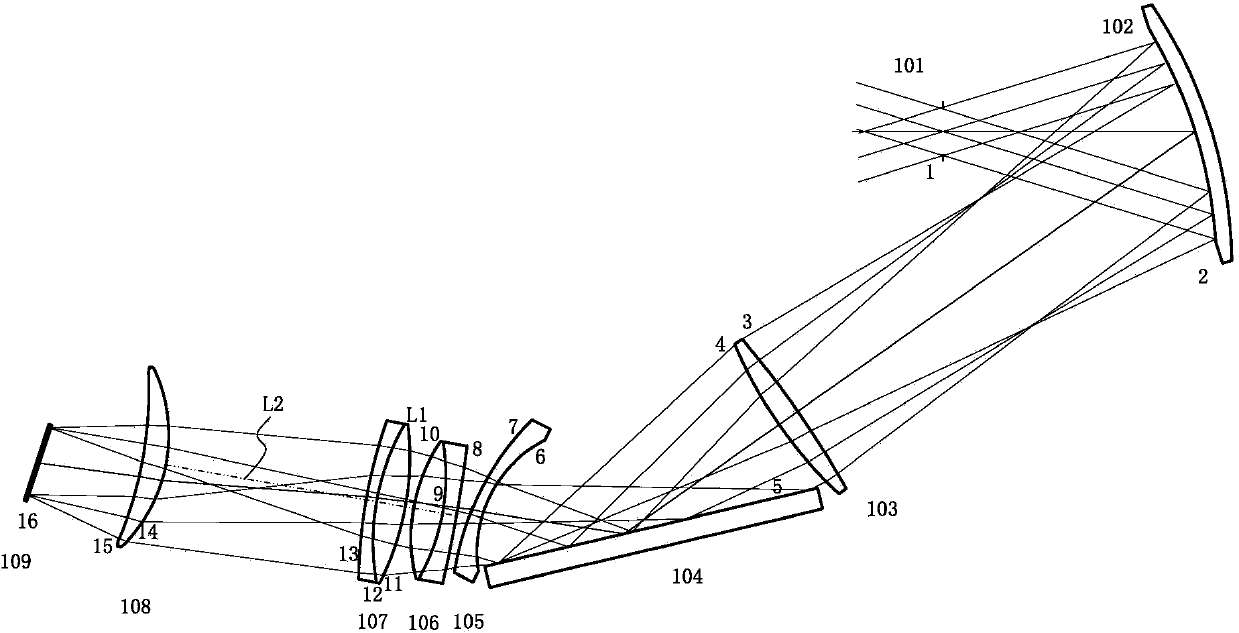Diopter-adjustable optical system for helmet display
A helmet-mounted display and optical system technology, applied in the field of optics, can solve the problems that the lens magnifying device cannot be directly applied to the optical transmission-type helmet-mounted display, and can not see the external scenery, etc., and achieves simple and convenient focus adjustment, satisfactory imaging quality, and a wide range of applications Effect
- Summary
- Abstract
- Description
- Claims
- Application Information
AI Technical Summary
Problems solved by technology
Method used
Image
Examples
Embodiment 1
[0037] Such as image 3 As shown, from the human eye observation side to the microdisplay device side, there are diaphragm 101, spectacle lens 102, biconvex lens 103, plane mirror 104, negative meniscus lens 105, positive doublet lens 106, positive doublet lens 107 , a positive meniscus lens 108 , and a microdisplay device 109 . Taking the surface of the diaphragm as number 1, and so on, the surface number of the microdisplay is 16. The design data of each element of the optical system in this embodiment is shown in Table 1.
[0038] Table 1
[0039]
[0040] The system parameters of the optical system in the embodiment are as follows: exit pupil diameter=9mm, horizontal field of view=34°, vertical field of view=23.3°, exit pupil distance=47.23mm, diopter adjustment range-5.5 to 0.
[0041] The surface with "*" on the upper corner of the surface number in Table 1 determines the position of the surface using the global coordinate system OXYZ, the Z axis is horizontal to th...
Embodiment 2
[0055] Figure 5 Shows the diopter-adjustable optical system for helmet display of Embodiment 2 of the present invention, from the human eye observation side to the micro-display side, followed by an aperture 201, a spectacle-like reflector 202, a positive meniscus lens 203, and a plane Mirror 204, negative meniscus lens 205, positive doublet lens 206, positive doublet lens 207, positive meniscus lens 208 and microdisplay 209, wherein there is a real image between the spectacle-like lens 202 and the positive meniscus lens 203, doublet The lens 206 is a negative-positive doublet lens, and the doublet lens 207 is a positive-negative doublet lens. The combination of the doublet lens 206 and the doublet lens 207 can reduce vertical aberration and system chromatic aberration. As a function, the positive meniscus lens 208 corrects aberrations related to the field of view, including distortion and field curvature, and well controls the telecentricity of the image space of the system....
Embodiment 3
[0069] Figure 7 Shows the adjustable diopter optical system for the helmet display of Embodiment 3 of the present invention, from the human eye observation side to the micro-display side, followed by an aperture 301, a spectacle-shaped mirror 302, a positive biconvex lens 303, and a plane reflection mirror 304, negative meniscus lens 305, positive doublet lens 306, positive doublet lens 307, positive meniscus lens 308, and microdisplay 309, wherein there is a real image between the spectacle-like lens 302 and the positive doublet lens 303, and the doublet lens 306 It is a negative-positive doublet lens, and the positive doublet lens 307 is a positive-negative doublet lens. The combination of the positive doublet lens 306 and the positive doublet lens 307 can reduce vertical aberration and system chromatic aberration The positive meniscus lens 308 corrects aberrations related to the field of view, including distortion and field curvature, and well controls the telecentricity o...
PUM
 Login to View More
Login to View More Abstract
Description
Claims
Application Information
 Login to View More
Login to View More - R&D
- Intellectual Property
- Life Sciences
- Materials
- Tech Scout
- Unparalleled Data Quality
- Higher Quality Content
- 60% Fewer Hallucinations
Browse by: Latest US Patents, China's latest patents, Technical Efficacy Thesaurus, Application Domain, Technology Topic, Popular Technical Reports.
© 2025 PatSnap. All rights reserved.Legal|Privacy policy|Modern Slavery Act Transparency Statement|Sitemap|About US| Contact US: help@patsnap.com



